#dave bolland
Text
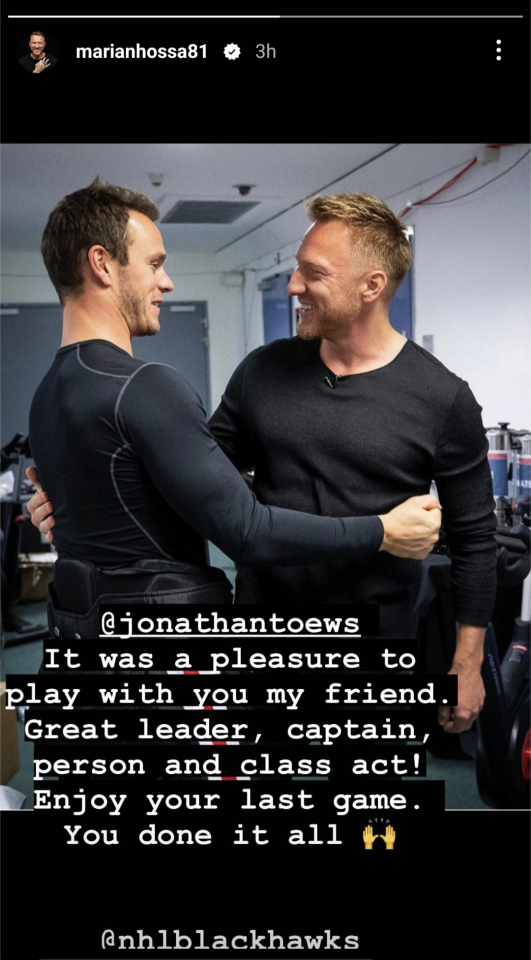



Some appreciation for the cap ♥️
#jonathan toews#last dose of jonny#oh captain my captain#chicago blackhawks#marian hossa#bryan bickell#dave bolland#andrew shaw#gotta love hypeman shawzy travelling to chicago for this#hockey baby
193 notes
·
View notes
Text
Upcoming Heritage International Comic Art Auction features pages from ‘Batman: The Dark Knight Returns’, ‘Watchmen’ and more
There's plenty of incredible art to savour in the upcoming Heritage's International Original Art and Anime Signature Auction, including pages from 2000AD, art by Moebius and much more
There’s plenty of incredible art to savour in the upcoming Heritage’s 6th – 8th October 2023 International Original Art and Anime Signature Auction, including pages from 2000AD, art by Moebius and an host of American and European talents, including Dave Gibbons, Steve Ditko, David Lloyd, Frank Miller and Albert Uderzo.
Two of the most renowned sequences from two of the most important American…

View On WordPress
#2000AD#Albert Uderzo#Andre Franquin#Andy Capp#Batman#Brian Bolland#Carlos Ezquerra#Conan the Barbarian#Dave Gibbons#David Lloyd#Frank Miller#Hergé#Heritage Auctions#Jean Giraud#Marvel UK#Mick Austin#Mick McMahon#Moebius#Reg Smythe#Sanjulian#Watchmen
5 notes
·
View notes
Photo

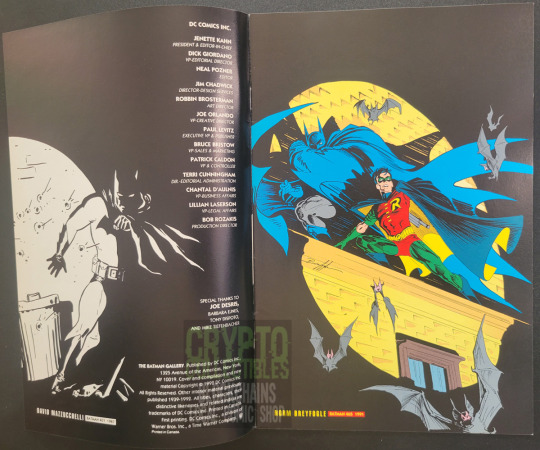
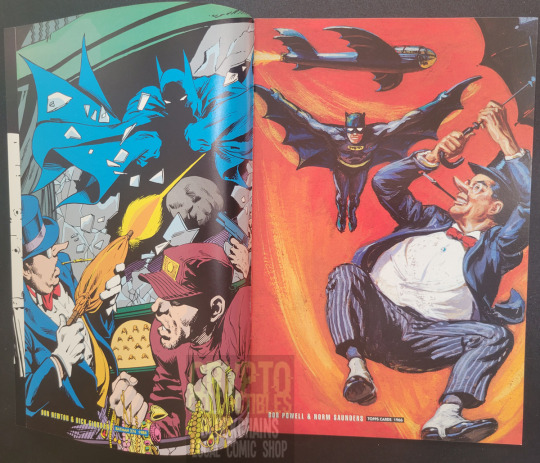
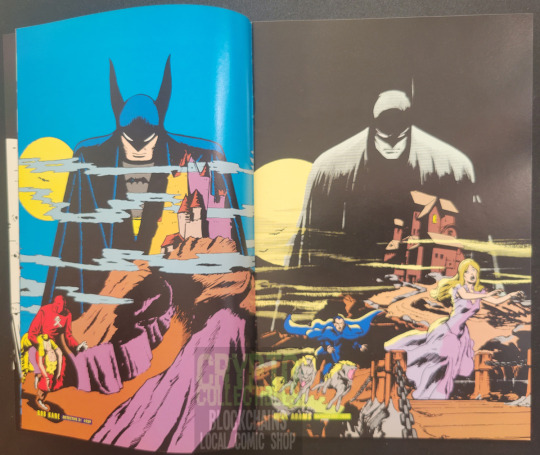

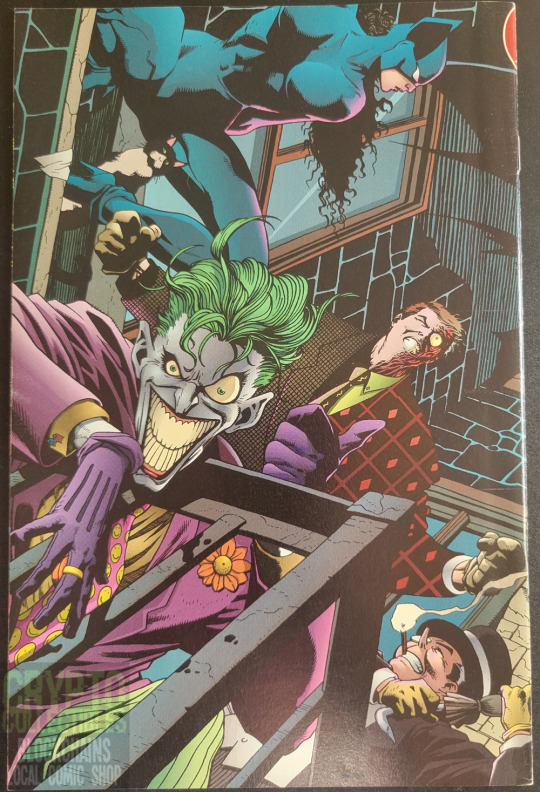
Batman Gallery #1 (1992) by DC Comics
Drawn by Neal Adams, Frank Miller, John Bolton, Brian Bolland, David Mazzucchelli, Don Newton, Garcia Lopez, George Perez, Todd McFarlane, Dave McKean, Joe Kubert, Walt Simonson, Marshall Rogers, and Jim Aparo, cover by Joe Quesada/Kevin Nowlan
#Batman Gallery#Batrman#DC Comics#1992#Neal Adams#Frank Miller#John Bolton#Brian Bolland#Joe Quesada#Kevin Nowlan#Joe Kubert#George Perez#David Mazzucchelli#Todd McFarlane#Dave McKean#Etsy#Vintage Comics#Comic Books#Comics#Walt Simonson#Marshall Rogers#Jim Aparo#The Penguin#The Joker#Robin#Two-Face#Gotham City
3 notes
·
View notes
Text
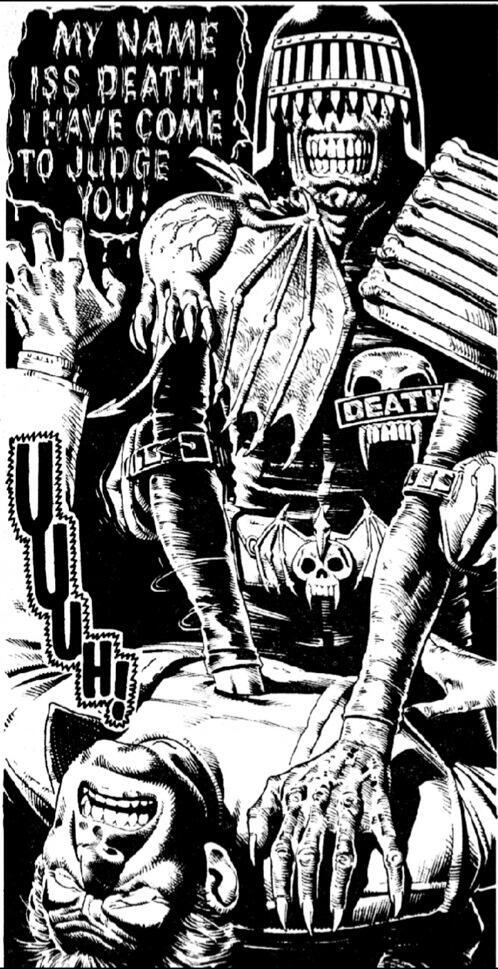


Judge Death 2000AD
5 notes
·
View notes
Text
Cover Art, Full Story From Robin’s 1988 ‘Death in the Family’ Shine Bat-Signal on Heritage’s June Comic Art Auction
Cover Art, Full Story From Robin’s 1988 ‘Death in the Family’ Shine Bat-Signal on Heritage’s June Comic Art Auction #comicart
Even before bidding opened for Heritage Auctions’ June 16-19 Comics & Comic Art Signature Auction, one offering made global headlines: Frank Miller and Lynn Varley’s original cover art for 1986’s Batman: The Dark Knight Returns Book One, the iconic cover from one of the most important titles of the past half century. Yet that historic lightning strike is just one centerpiece among many landmark…
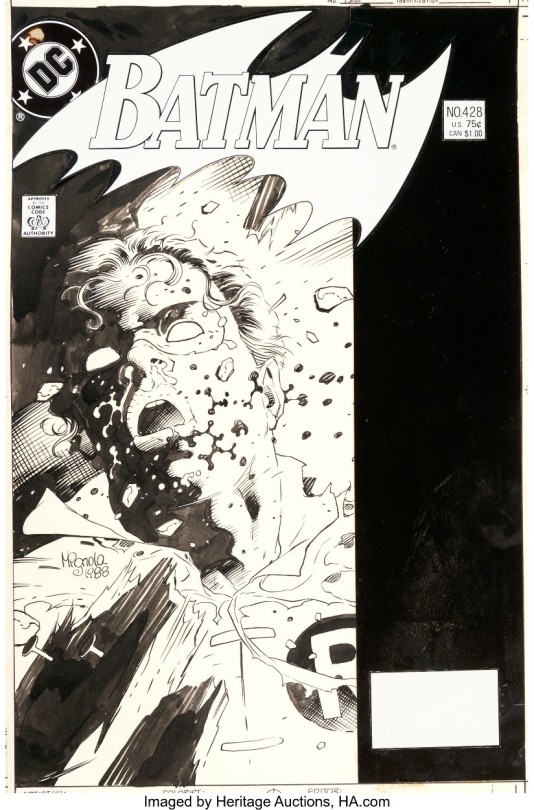
View On WordPress
#alan moore#auctions#batman#batman: the dark knight returns#batman: the killing joke#Bob Kane#brian bolland#comic art#dave cockrum#detective comics#frank miller#george perez#heritage auctions#jim lee#lynn varley#mike mignola#neal adams#spider-man#todd mcfarlane
4 notes
·
View notes
Photo
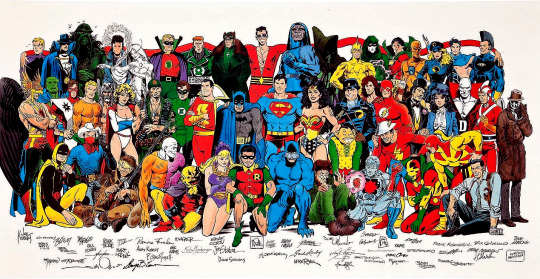

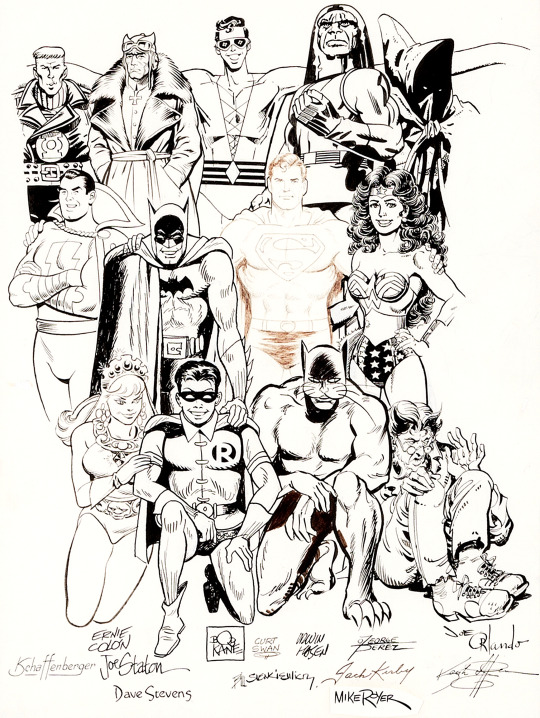




The rare 1987 History of the DC Universe poster with 53 characters by 54 different artists (most being the original creators of these characters)! While this was initially meant to be the crown jewel of a hardcover edition of the aforementioned series, the poster ended up as a limited edition direct order product and then a wall mural at DC’S New York offices until their closure and move to Burbank. The characters/artists present are:
Tommy Tomorrow - Jim Mooney
Phantom Stranger - Jim Aparo
Swamp Thing - Stephen Bissette & John Totleben
The Question - Denys Cowan
White Witch - P. Craig Russell
Alan Scott - Mart Nodell
Guy Gardner - Joe Staton
Hans von Hammer/Enemy Ace - Dave Stevens
Plastic Man - Bill Sienkiewicz
Darkseid - Jack Kirby & Mike Royer
Ragman - Keith Giffen
The Ray - Al Williamson & Brett Blevins
The Spectre - Michael Kaluta
Silverblade - Gene Colan
Robotman - Steve Lightle
Lady Blackhawk - Brian Bolland
Black Condor - Michael T. Gilbert
OMAC - Jim Starlin
Hawkman - Joe Kubert
Martian Manhunter - Arthur Adams
Paul Kirk/Manhunter - Walt Simonson
Aquaman - Paul Norris
Warlord - Mike Grell
Power Girl - Mary Wilshire
Sgt. Rock - Andy Kubert
Hal Jordan - Gil Kane
Captain Marvel - Kurt Schaffenberger
Batman - Bob Kane
Superman - Curt Swan
Wonder Woman - George Perez
Blackhawk - Howard Chaykin
Arion - Jan Duursema
Barry Allen - Carmine Infantino
Zatara - Jim Steranko
Zatanna - Gray Morrow
Deadman - Neal Adams
Adam Strange - Murphy Anderson
Rorschach - Dave Gibbons
Chop-Chop - Dave Stevens
Jay Garrick - Jaime Hernandez
Judomaster - Frank McLaughlin
Hourman - Gilbert Hernandez
Vigilante - Dan Spiegel
Tomahawk - Frank Thorne
Metamorpho - Ramona Fradon
Etrigan - Matt Wagner
Amethyst - Ernie Colon
Robin - Bob Kane
Wildcat - Irwin Hasen
Cain - Joe Orlando
Captain Atom - Pat Broderick
Mister Miracle - Steve Rude
Sarge Steel - Dick Giordano
#history of the dc universe#jsa#jla#justice society of america#justice league of america#batman#superman#green lantern#bruce wayne#clark kent#hal jordan#alan scott#the flash#jay garrick#barry allen#wildcat#ted grant#hourman#rex tyler#rorschach#walter kovacs#watchmen#etrigan#zatanna#zatanna zatara#captain marvel#shazam#billy batson#phantom stranger#joe kubert
306 notes
·
View notes
Text
Concept/Comic Artists Part 1:
Masterlist
BUY ME A COFFEE
Not to be confused with conceptual artists within Art History, to find out more click here. Before deciding that I wished to be an art historian, I very much wished to pursue some type of art making. And I was mostly inspired by the idea generating and development within Concept Art spheres.
Concept Art is mainly used for idea generating within a market, for films or video games, and is used in drawing out designs from a brief and prompt. Comic artists, well that one I believe is self-explanatory (and some comic recommendations). The reason I’m making this post is because I wish to pay homage to my roots and highlight some more contemporary artists rather than dead ones from my Art History lessons.
And a special thank you @willow-dino for helping me! I lost all my notes on this topic, but someone still had theirs.
Comic Artists and Comics
Adrian Alphona, 2003/2014; Runaways/Ms Mervel
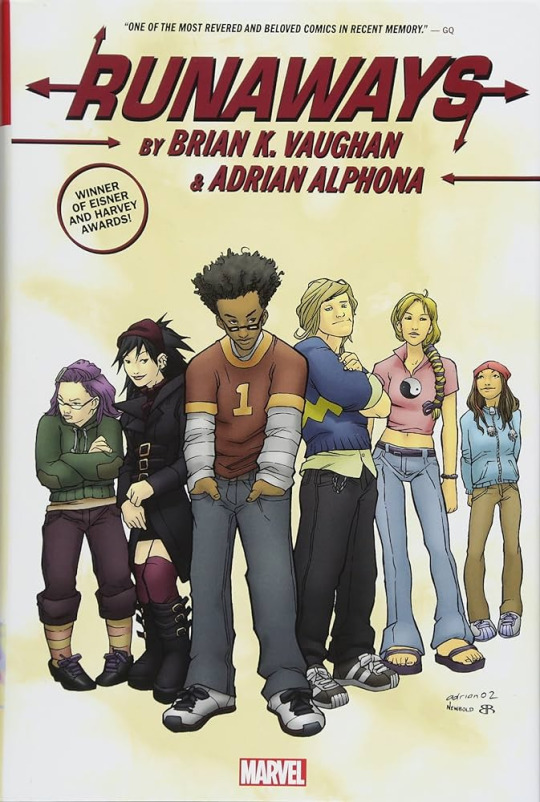
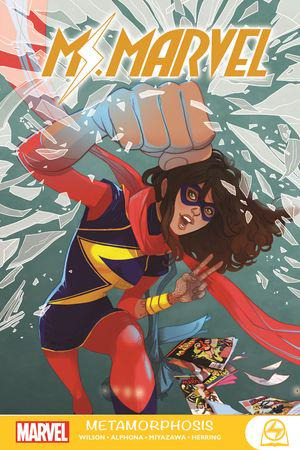
Hiromu Arakawa, 2001; Fullmetal Alchemist (FMA)
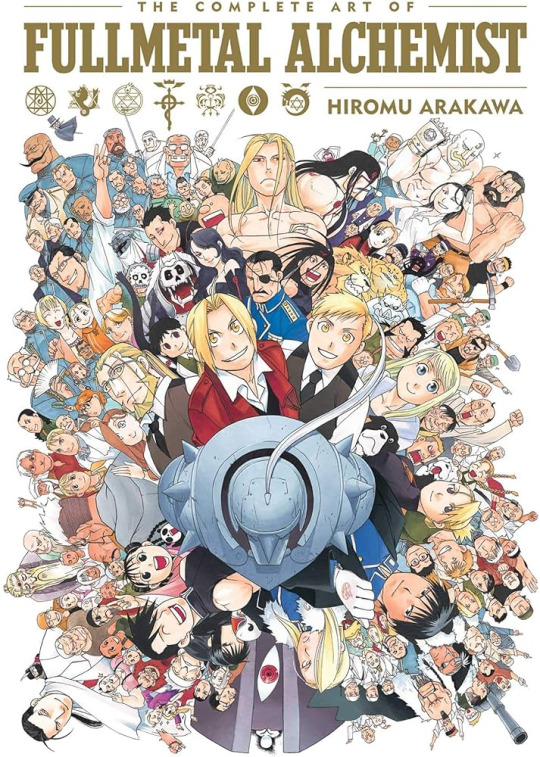

Chris Bachalo, 1993; The Children's Crusade

Mark Bagley, 2000; Ultimate Spiderman


Brian Bolland, 1988; The Killing Joke

Jean-Michel Charlier and Albert Uderzo, 1959; Le Adventures de Tanguy et Laverdure (French Air Force)
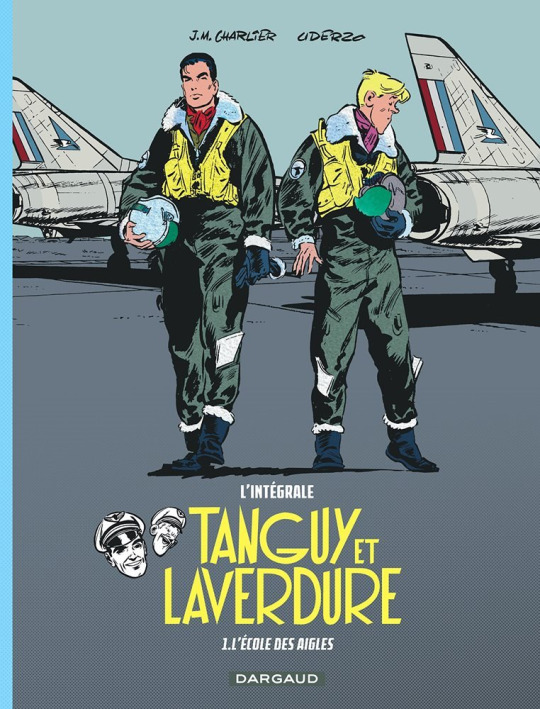
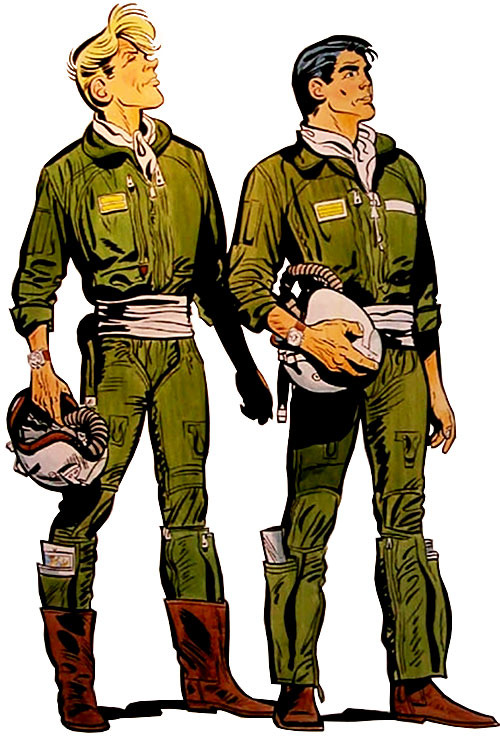
Mark Dringenburg, 1986; The Sandman #6


Mitch Gerads, 2015; The Sheriff of Babylon

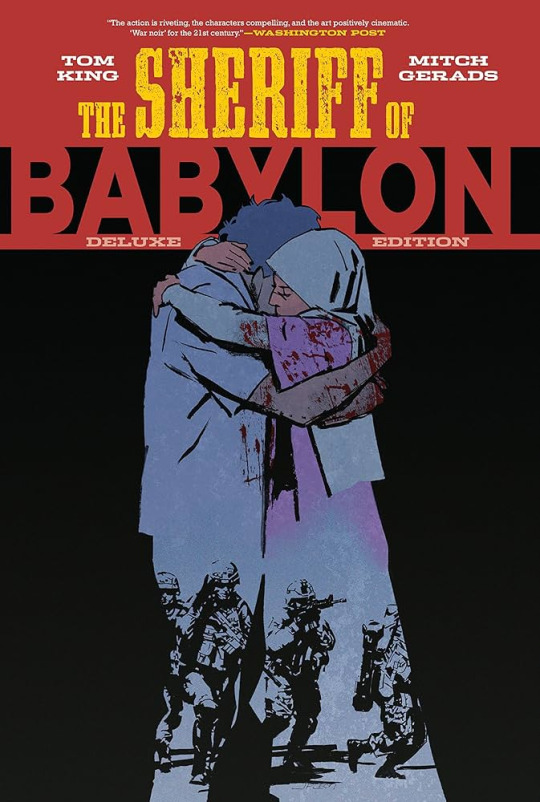
Dave Gibbson, 1986; Watchmen


Jean Giraud (Moebius), 1963; Blueberry


Jean Graton, 1957; Michael Vaillant


Herge, 1929 – 86; The Adventures of TinTin

Kelly Jones, 1991/2000/2021; The Sandman #17/Sleepy Hollow/Batman: Black and White #3


Taiyo Matsumoto, 2010 – 15; Sunny

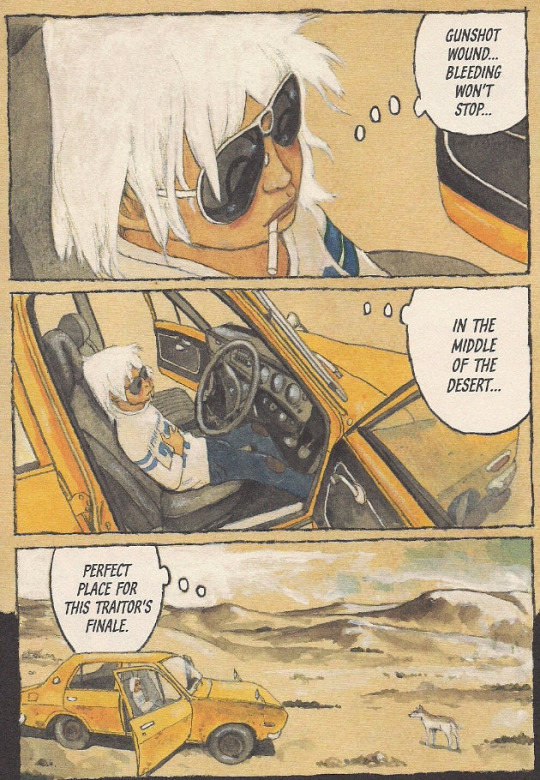
Dave McKean, 1989/1992/2016; Arkham Asylum/Signal to Noise/Black Dog: The Dream of Paul Nash
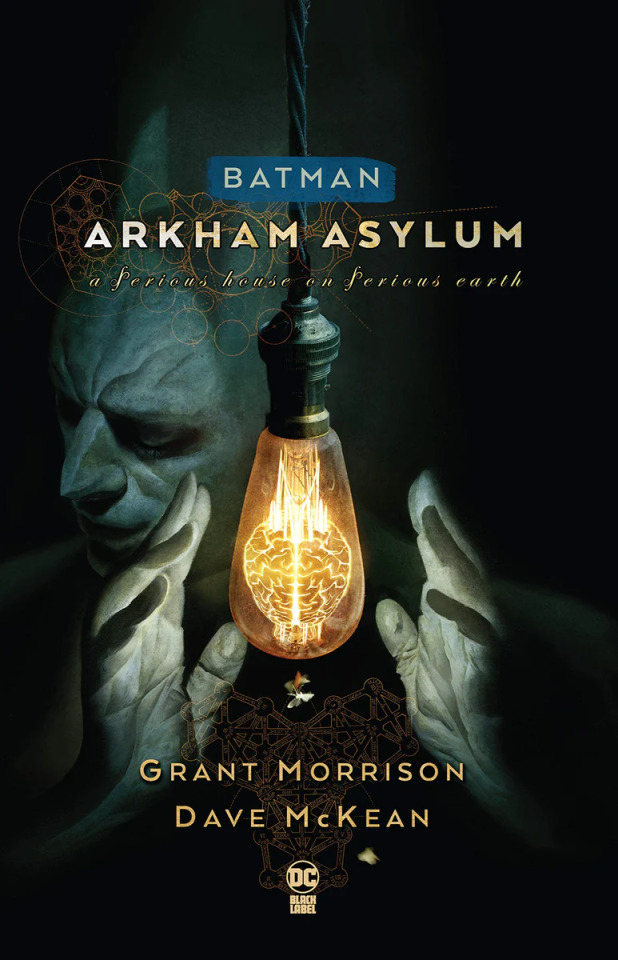

Carlos Meglia, 1991; Cybersix
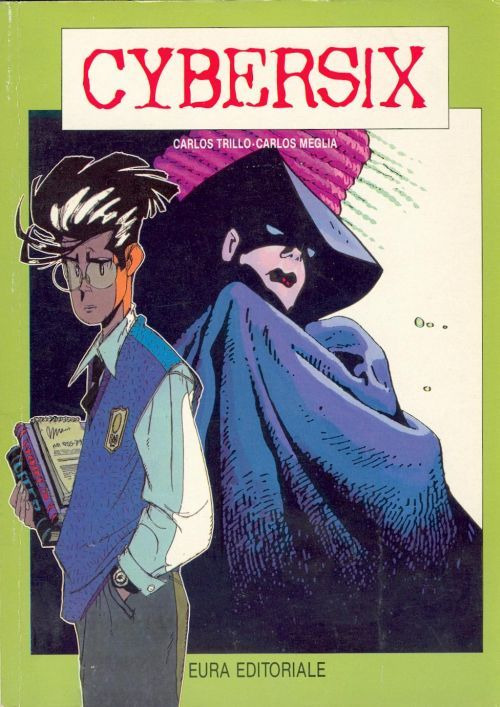
Go to Part 2 for more artists...
#art gallery#artwork#writing#art tag#art hitory#art#essay#paintings#art exhibition#art show#comic art#comics#comic books#web comic#comic strip#artists#digital art#watercolor#drawings#illustration#concept art#character concept#character#sciencefiction#scifi#fantasy#sword#spiderman#manga#anime and manga
21 notes
·
View notes
Text

Amazing Heroes No. 191, June 1991 featuring interviews with Brian Bolland and John Bolton. From memory they tried to get a third British artist for this (whose work would have featured in the third 'stripe' on the cover) but it didn't happen for whatever reason. Can't remember who it was, might have been Dave McKean.
19 notes
·
View notes
Text
A guide to hockey nicknames
It’s hockey season my friends, and as a true Canadian who’s spent the last little while glued to the WJC and watching the leafs get sniped day after day, I’ve obviously been thinking about hockey nicknames.
So naturally, I decided to create this little guide. Drop what your hockey nickname would be, I’d love to read them!
Most of the time your main nickname depends on your last name, but there are many nicknames based on first names too.
Most common nicknames based on last names are a shortened version of the name accompanied by an -Sey/ Sie, or a simple S or E
Examples:
Mitch Marner - Marns, Mitchy
Auston Matthews - Matty, Tony, Tone
Connor Bedard- Bedsey
Michael Bunting - Bunts
Alexander Kerfoot - footie
Brady Tkachuk - chucky
Brad Marchand - Marchy
Patrick Marleau - Patty
William Nylander - Willy
Last names may also be shortened and given an -Er
Examples:
Kristopher LeTang - Tanger
Joseph Woll- Woller
Brian Spencer - Spinner
Steven Stamkos - stammer
Alexander Steen - Steener
Sometimes nicknames will be a pun or a play on words related to your last name
Examples:
Jack Campbell - soupy
George Armstrong - chief
Derek Boogaard - boogie man
Francis Bouillon - the cube
Stu Grimson - grim reaper
Leo Labine - Lion
John madden - mad dog
Brad may - May Day
Mark Recchi - wrecking ball
Larry Robinson - big bird
Curtis Sanford - sandman
Rob schremp- cocktail schremp
Jason Spezza - spez-dispenser
Tim Thomas - the tank
Jesper fast - quickie
And other times a nickname can be completely unrelated to your name but has to do with something else
Examples:
Auston Matthews - Papi
Wade Belak - intimidator
Beau Bennett - sunshine
Dave Bolland - the rat, greyhound
David Williams - the tiger
Gary Unger - iron man
Christ Tierney - cobra
Scott stevens - captain crunch
Jason smith - gator
Happy hockey season and go team Canada! 🇨🇦
9 notes
·
View notes
Text
The Folio Society to Publish "DC: Batman" Celebrating Batman's 85th Anniversary

The Folio Society and DC Comics are partnering on DC: Batman, a hardback book celebrating the Dark Knight's 85th anniversary. The 320-page deluxe compilation will include 12 seminal comics all selected and introduced by DC President, Publisher, and Editor-in-Chief Jennette Kahn. DC: Batman will also come with stand-alone replica copy of Batman #1, "scanned in its entirety from an original 1940 copy...which includes the original back-up strips and vintage ads and introduces DC’s Clown Prince of Crime, aka The Joker, and The Cat, who would come to be known as Catwoman." (DC Comics)
Per DC Comics, DC: Batman includes:
"Facsimile: Batman #1 (Spring 1940)
Writer: Bill Finger
Cover artists: Bob Kane, Jerry Robinson
Artists: Bob Kane, Sheldon Moldoff
Editor: Whitney Ellsworth
The Bat-Man
Detective Comics #27 (May 1939)
Writer: Bill Finger
Artist: Bob Kane
Editor: Vincent Sullivan
Robin—the Boy Wonder
Detective Comics #38 (April 1940)
Writer: Bill Finger
Artists: Bob Kane, Jerry Robinson
Editor: Whitney Ellsworth
The Crimes of Two-Face!
Detective Comics #66 (August 1942)
Writer: Bill Finger
Artists: Jerry Robinson, George Roussos
Letterers: Ira Schnapp
Editor: Whitney Ellsworth
Batman and Green Arrow: The Senator’s Been Shot!
The Brave and the Bold #85 (September 1969)
Writer: Bob Haney
Cover artist: Neal Adams
Penciler: Neal Adams
Inker: Dick Giordano
Letterer: Ben Oda
Editor: Murray Boltinoff
Daughter of the Demon
Batman #232 (June 1971)
Writer: Dennis O'Neil
Cover artist: Neal Adams
Penciler: Neal Adams
Inker: Dick Giordano
Letterer: John Costanza
Editor: Julius Schwartz
The Dead Yet Live
Detective Comics #471 (August 1977)
Writer: Steve Englehart
Cover artists: Marshall Rogers, Terry Austin, Tatjana Wood, Gaspar Saladino
Penciler: Marshall Rogers
Inker: Terry Austin
Colorists: Marshall Rogers
Letterer: John Workman
Editors: Julius Schwartz, E. Nelson Bridwell
The Dark Knight Returns
Batman: The Dark Knight Returns #1 (June 1986)
Writer: Frank Miller
Cover artists: Frank Miller, Lynn Varley
Penciler: Frank Miller
Inker: Klaus Janson
Colorist: Lynn Varley
Letterer: John Costanza
Editors: Dick Giordano, Dennis O'Neil
Batman: Year One—Chapter One: Who I Am—How I Come to Be
Batman #404 (February 1987)
Writer: Frank Miller
Artist: Dave Mazzucchelli
Colorist: Richmond Lewis
Letterer: Todd Klein
Editor: Dennis O'Neil
Batman: The Killing Joke (July 1988)
Writer: Alan Moore
Cover artists: Brian Bolland, Richard Bruning
Artist: Brian Bolland
Colorist: John Higgins
Letterer: Richard Starkings
Editors: Dennis O'Neil, Dan Raspler
The Last Arkham (Part One)
Batman: Shadow of the Bat #1 (June 1992)
Writer: Alan Grant
Cover artist: Brian Stelfreeze
Penciler: Norm Breyfogle
Inker: Norm Breyfogle
Colorist: Adrienne Roy
Letterer: Todd Klein
Editors: Scott Peterson, Dennis O'Neil
Knightfall Part 1: Crossed Eyes and Dotty Teas
Batman #492 (May 1993)
Writer: Doug Moench
Cover artists: Kelley Jones, Bob LeRose
Penciler: Norm Breyfogle
Inker: Norm Breyfogle
Colorist Adrienne Roy
Letterer: Richard Starkings
Editors: Scott Peterson, Jordan B. Gorfinkel, Dennis O'Neil"
DC: Batman is available at The Folio Society.
(Image via DC Comics)
3 notes
·
View notes
Text
Comics Comints 3: Animal Man
Previously on Comics Comments: [The Incal] [Solo Levelling]. (Yeah this name is kind of terrible isn’t it? Part of me is like ‘for god’s sake change it’ and part of me is like ‘commit to the bit’.)
I think you could say I tend to like three different sources of comic. One is webcomics. The second is manga (and also manhwa). The third? Comics written by a wizard in the 1980s.
You see, most of the real ‘classic’ comics from this period are by some sort of wizard. Alan Moore? Famously a magician and really looks the part. Grant Morrison? Chaos magician. Alejandro Jodorowsky? Read the last first post in this series lmao.
It’s not actually all that surprising since comics are an incredibly densely symbolic medium which give you a pretty direct line of attack on the collective unconscious, if you believe in that. Being a wizard is probably pretty good training for writing interesting comics. Or maybe Alan Moore’s success just kicked off a fad of trying to find more British wizards to move comics off the shells at DC - pretty much Morrison’s own account of their introduction into the world of comics.
And that brings us to...
Animal Man
(1988-95, written by Grant Morrison, pencilled Chas Truog, Tom Grummett and Paris Cullins, inked Doug Hazlewood, Mark McKenna, Steve Montano and Mark Farmer, coloured Tatjana Wood and Helen Vesik, lettered by John Costanza and Janice Chiang, covers illustrated by Brian Bolland... phew...)

So. Animal Man! Basically the story as Morrison tells it in the intro to the collected edition is...
In 1987, at the height of the critical acclaim for Alan Moore’s work on SWAMP THING and WATCHMEN, DC Comics dispatched a band of troubleshooters on what is quaintly termed a “headhunting mission” to the United Kingdom. The brief was to turn up the stones and see if there weren’t any more cranky Brit authors who might be able to work wonders with some of hte dusty old characters languishing in DC’s back catalogue. As one of those who received the call that year, I had no idea who I might dig up and revamp. On the Glasgow to London train, however, my feverishly overstressed brain at last lighted upon Animal Man. This minor character from the pages of STRANGE ADVENTURES in the ‘60s had always, for heaven only knows what murky reasons, fascinated me and, as the train chugged through a picturesque language of Tudor houses and smiling bobbies on bicycles, I began to put together a scenario involving an out-of-work, married-with-children third-rate superhero who becomes involved with animal rights issues and finds his true vocation in life.
You can read the full introduction here. It’s pretty funny.
In fact, Morrison is leaving out a little of the story. The ‘headhunting mission’ took place after Alan Moore decisively cut ties with DC over issues related to royalties (particularly for merchandising) and a proposed age-rating system. He stopped writing for them after finishing the last few issues of V for Vendetta, and DC went looking for someone new to fill his niche of ‘left-wing British guy, good at prose, wizard’. Along with Morrison, they found...
Jamie Delano, who was approached by DC as the writer of the Swamp Thing spin off Hellblazer; Neil Gaiman and Dave McKean, who collaborated on the Black Orchid limited series, as well as the famous and acclaimed Sandman; Peter Milligan, who launched a new Shade, the Changing Man series; and Scottish creator Grant Morrison, whose pitch of an Animal Man series was approved. Later British creators to work on American comics include Mark Millar, Warren Ellis, Garth Ennis and Paul Jenkins.
This also comes in a time when American comics are getting more and more literary aspirations: complex characterisation, more naturalistic dialogue, less emphasis on superheroes. Which can perhaps also be attributed to Alan Moore. The ‘British invasion’ might be compared with the rise of gekiga in Japan in the 60s and 70s, although here the change was happening not in alternative magazines like Garo but the most mainstream comics. Putting in a pin in that, because I need to learn more about this period.
I came to Animal Man knowing really only one thing: that it gets increasingly metafictional, culminating in an arc where the protagonist goes and meets Grant Morrison themself. This does indeed happen and it’s cool! But before that a bunch of other stuff has to happen to set up the thematic significance of this metafiction...
What follows: a lot of art and story breakdown.
Morrison is a very interesting figure who I’d like to learn a lot more about. I thought of them as another example of the ‘spend years making sequential art instead of transitioning’ archetype, but it seems maybe a little more complicated than that - I think I need to do more research before I try and say anything definitive about the many noticeable ways trans girls figure in the imagination of comics from this period, and it doesn’t factor much in Animal Man compared to say Doom Patrol.
Indeed, main character Buddy is an almost parodically Normal Dad, a blonde white man living in an American suburban house with a white picket fence and... well, 2 children, not 2.5, but you know.

Into this world comes all sorts of weird stuff because it’s a Grant Morrison comic, and a lot of the humour in the earlier parts of the comic comes from the idea of shining a look at the fringes of the DC universe away from the central superhero battles, with a local low-tier superhero making TV appearances and becoming a minor celebrity. I think ‘everyday life in a world where superheroes are real’ has been done a lot since then, but it’s done well here. Being a superhero for Buddy starts out as just a day job; obscure superhero teams from Morrison’s encyclopedic knowledge of DC comics history are made into obscure superhero teams in-universe as well.
I don’t read American comics nearly as often as I read manga and webcomics - working on filling in the gaps there - so it’s hard for me to comment on Truog’s art in contrast to other comics. Which means what strikes me is probably more traits of ‘American Comics’ than this one specifically, but what ho...
The immediate thing I noticed is the immense anatomical precision, particularly when it comes to drawing muscles - something I’d also been struggling with at the time I read it so I was paying attention lol. Peter Chung made an interesting remark in an interview which I’ll quote here...
I think a lot of illustrators realize—and you see this a lot in American comics as well—that if you draw costumes realistically, it's very difficult. You end up spending all your time trying to create believable drapery. So the tendency is to draw skin-tight costumes that mold around the body. This allows you to use the body more. You see this with classical sculpture, and dancers. You try to use the expressive qualities of the human body more—that's why sculptors prefer to work with nudes, as opposed to trying to make the clothing look accurate. Otherwise you end up concentrating on the clothing and not the person.
Fairly early on, Animal Man’s outfit is updated to include a leather jacket, and there’s a solid sense of how to handle the cloth. Here’s an action scene from fairly early on with Buddy fighting against a rat monster created by the tragic villain B’wana Beast (more on him in a bit)...
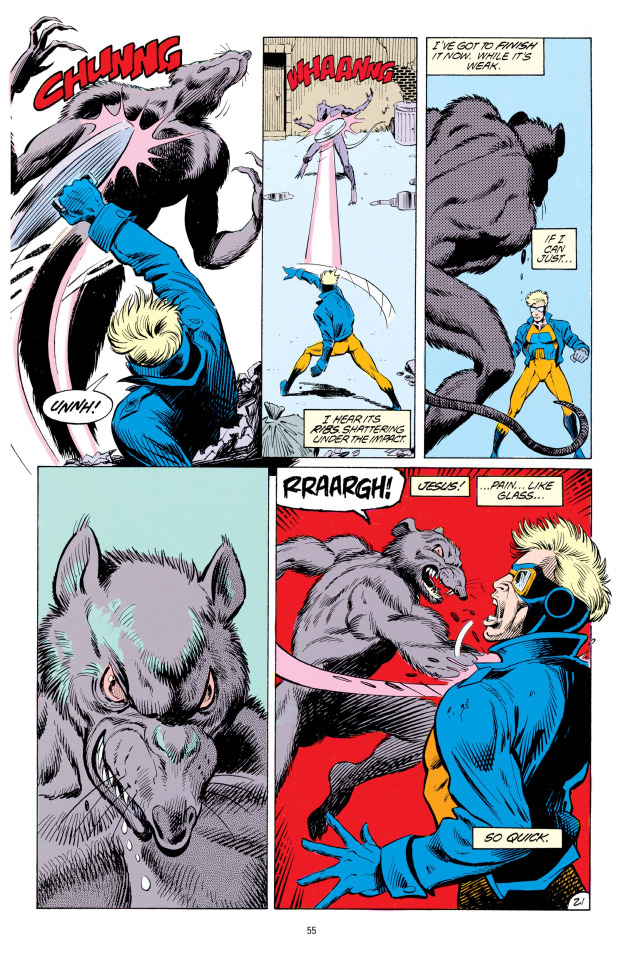
You can see how the cloth stretches at the elbow and bunches up on the inside fold. This also shows a few other aspects of the art: the shading is completely carried by hatching in the linework, with the colours being flat, either pastel or highly saturated. I think this is in part a limitation of the printing technologies of the time. There’s occasional use of screentone, as you can see on the top right panel there (which downscaling has turned into a moiré pattern...)
In comparison to manga, beyond the general differences in character design, it’s interesting to see what’s different in how action scenes are conveyed. The panelling is generally very regular and rectangular, but there will occasionally be layouts with figures overlapping the border. Some of the ways of conveying motion, like dynamic unbalanced poses, or replacing lines with perpendicular hatching, is also widely used in manga; some aren’t, such as the motion arcs you can see in the page above. There usually isn’t a lot of exaggeration or extreme perspective distortion.
I think the colouring weakens it. The colours mostly serve to separate out different volumes, but they don’t really convey much in their own right. Out of curiosity, I tried putting the page above through desaturate and threshold filters to see what it would look like uncoloured. Here’s a threshold, which is what the inked page would look like...
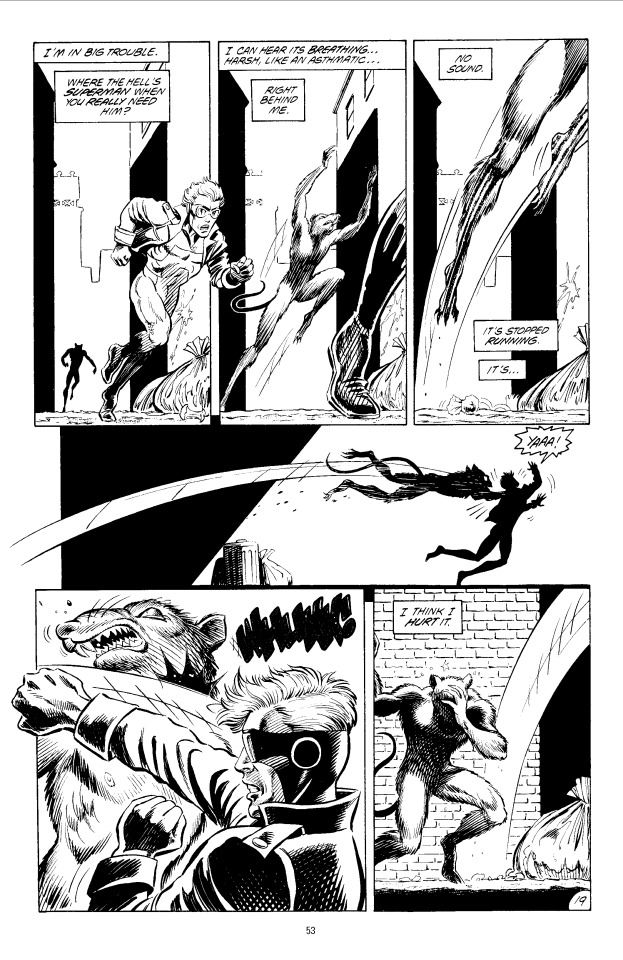
and here’s a desaturate, which replaces the colours with pure value:

So you can see having some values to separate different elements helps, but honestly I think I prefer it desaturated lol. Still, it’s much better than the overly rendered hyper-contrast style that became popular a decade later.
The other big thing that’s different from what I’m used to in manga is the large amount of narration accompanying panels, typically but not always first-person. This is apparently something Alan Moore is responsible for establishing with V for Vendetta. I think the potential drawback with this approach is that your eyes may go straight for the text boxes, and skip the drawings entirely.
There are absolutely good sequences though, such as when Buddy and his friend the physicist
Despite these small complaints, the art generally works very well. Where it gets interesting is later in the comic when things start to get very meta, so you get a character’s deterioriation represented by using unfinished art (sketches or uninked drawings), and later messing with the formal elements like panel borders. There’s a sequence where a highly advanced Buddy fights an evil version of Superman from another timeline during a massive reality breakdown provoked by a character who is aware of all the discarded storylines and timelines in the DC universe and wants to save them, and thus you get pages like this:
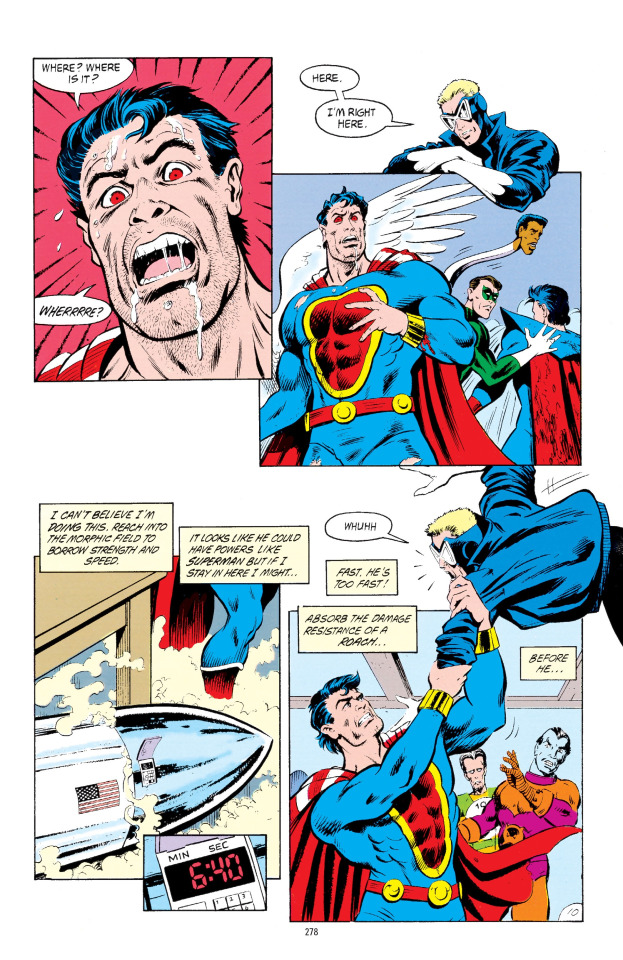
Animal Man’s villains are rarely ever especially villainous, and the tone of a lot of the earlier stories is Buddy finding out about the situation and trying to prevent a tragic outcome and usually failing. Morrison used the comic to some degree to soapbox for animal rights, with early arcs dealing with animal experimentation labs and sadistic dolphin hunters. At one point he even pops by the UK to help out some hunt sabs. But it’s more using this as a source for stories than something purely didactic, and leans into conflicts like Buddy’s ambivalence when his ecoterrorist allies kill a firefighter during an attack on an animal lab as part of a broader arc of his life going to shit; he is, superhero or not, just one man who gets swept up in larger events most of the time.
Speaking of larger events, Morrison’s run on Animal Man coincided with one of DC’s periodic massive crossover events called uhh (*looks up*) Invasion!. Basically a bunch of aliens show up, so Buddy’s helping fight them; then off-screen a ‘gene bomb’ goes off which scrambles Buddy’s powers. (This also played into Morrison’s run on Doom Patrol, which I’m still reading at the moment, so more on that in the future!) The storylines associated with this event - one about an alien artist who wants to terraform the Earth, the other about a washed-up suicidal supervillain - are both good, and ‘aliens show up’ is really not far outside the usual sort of things that happen in Animal Man, but it’s funny that Grant Morrison, at the time ‘just’ an up-and-coming new writer at DC comics, is now probably the only reason that this whole event is still remembered in 2022.
Anyway, let’s get into the metafiction stuff. The story is full of DC deep cuts, and Morrison seems to be very interested in how fictional characters are constructed, how they relate to their readers, how their stories are affected by the outside world...

The first movement in this direction is the story about Wile E. Coyote, which sees him rebel against God for creating a life of ceaseless violence for cartoon animals - only to be punished by incarnating him as a werewolf in the real world. Over the course of that story, Wile E. Crafty is run over, shot, crushed, and blown up, becoming a kind of Jesus-like figure whose suffering is supposed to save the animals. It’s a wonderfully batshit idea, and it works well in context - apparently this comic sold like mad so Morrison was encouraged to take it further. Animal Man’s role in this story - as in quite a lot of stories - is to witness Crafty’s death.
Thus over the course of Animal Man, we encounter a pair of aliens who find that the general trends in comic writing of the day - the emphasis on more complex characterisation for example - is increasingly straining the fabric of fictional reality...

The aliens stage an intervention to try and use Buddy’s memories to repair the timeline (or something??), but this ends up unleashing more chaos down the line, as more and more characters start attaining a fourth-wall breaking awareness. The next arc sets up some unexplained weirdness: a strange ghostly figure of Buddy attempts to communicate with his family, while meanwhile we’re introduced to the character of Highwater, a Native physicist who’s drawn into the mystery of an Arkham Asylum patient who seems to (for our outside eyes) have fourth-wall breaking knowledge.
So after the incident with the aliens, Buddy meets up with Highwater, and they go into the desert and have a peyote trip which leads to some fun imagery, hero gets power up. Meanwhile, government/corporate goons kill Buddy’s family. He gets back, and we find out the cause of the ghostly Buddy: distraught, he tries to time travel back to save them, but when his means of time travel doesn’t make that possible. The guy from Arkham Asylum meanwhile summons a bunch of DC characters from various discarded storylines and alternate universes; the aliens intervene, and Highwater ends up sealing it all off again, in the process becoming a mute Arkham inmate.
Buddy demands answers from the aliens, but they peace out; nevertheless he finds a strange door which takes him to a metafictional plane where he can - much like good old Crafty! - go and demand explanation from his creator. He soon finds discarded fictional characters in a realm where nothing can form stories, and is given a dying monkey with a typewriter that’s writing the comics script, and instructed to carry the monkey to the mythical city of ‘Formation’. (So I guess it’s still kind of animal related!)
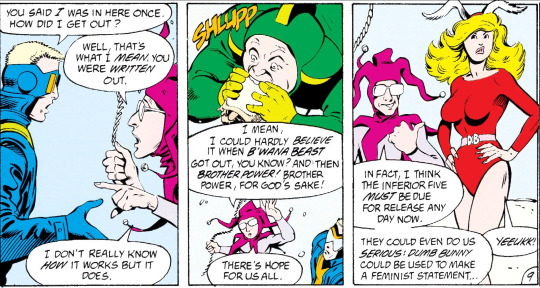
But like all the other people Buddy couldn’t save, the monkey dies, and his journey takes him back to the start. After all this he finally gets to meet Grant Morrison!
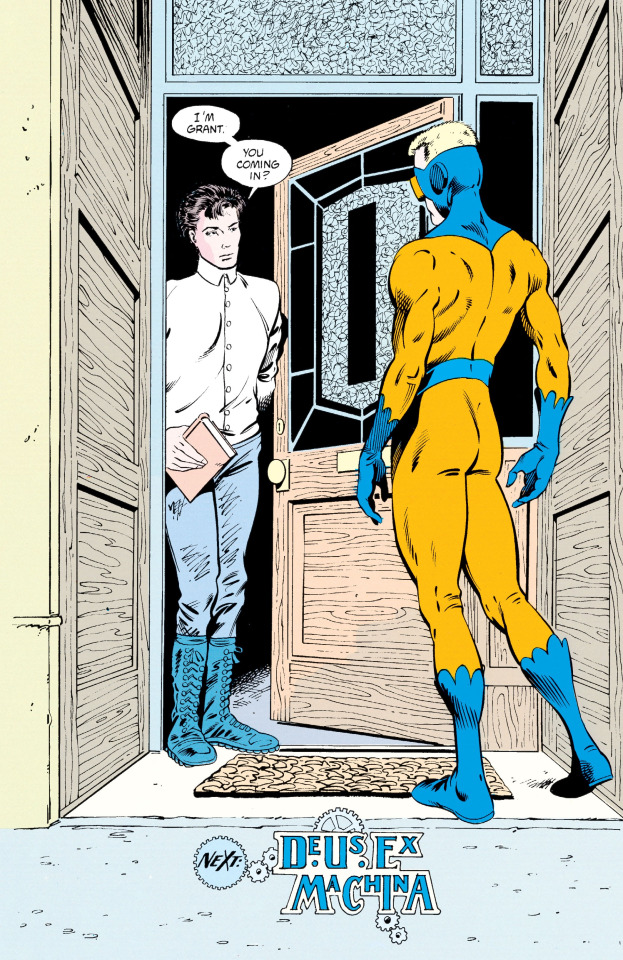
The final issue has Morrison talking to both Buddy and the reader - giving acknowledgements, telling the story of their childhood imaginary friend Foxy, and explaining the craft of comics-making to Buddy and musing on the differences between comics life and real life.
Which is a fun little dialogue, because while it is drawing our attention to the constructed and arbitrary nature of everything in the story, it also at the same time has to function as a story. Buddy’s reactions - panicked incomprehension, questioning - have to continue to feel natural. Even though the comic is turning to us and saying ‘this man is fake’, it does its level best to cue us to think he’s real.
I like metafiction, but after you’ve handled the ‘character discovers they’re fictional’ scene, you need to figure out what it’s actually for. In this case, it’s part of the comic’s general theme of powerlessness and futility. Here’s the key page:

...which literally leads to a panel where Morrison turns to the camera and tells you to join PETA, something that hasn’t aged especially well. Morrison agonises a bit over why we use real death and suffering as entertainment - why they’d think about using their own cat’s death as material for this story - and then leaves, resurrecting Buddy’s family on the final panel.
So! Long summary over (thanks for bearing with me, I wanted to get it all straight in my head).
At this point, ‘fictional characters discover they are fictional’ is a pretty heavily done narrative, so you have to have some kind of very strong reason to use the device. I think that was way less true in the 80s - Italo Calvino’s novel If on a winters night a traveler was only published ‘79 after all!
In this case, its use is to provide a little reflective monologue on 1. living in a cruel and nihilistic world, in contrast to fictional characters who have a creator they can confront 2. Morrison’s position as an outside writer being pulled into the vast machine of the DC universe. Their intervention is... an interesting kind of critical, seeking to update rather than simply write out dubious past storylines, so the story acts as a kind of critical commentary on its predecessors. This is most apparent in one storyline which sees the old character B’wana Beast, a Tarzan-like figure who gets animal powers from a special helmet and is known as the ‘White God’, passing on his powers to a Black anti-apartheid activist. A lot of others simply deal with nostalgia, getting older, the world moving on and becoming more complicated.
Morrison describes their final storyline as an anticlimax. Which like... on the one hand, how could it possibly be? Buddy has uncovered the truth that no character in the setting can know. But on the other hand, by heavily emphasising everything is arbitrary, it does indeed dismantle the tension; there is no way it could be anything other than a final storyline.
Buddy spends much of his narrative under Morrison being unable to do more than stand by as terrible things happen around him. He tries extremely hard to be caring and empathetic, and this is often appreciated but rarely enough to save anyone. In the end he ‘realises’ that ‘he’ has even less power than that - he’s just an instrument of Morrison and whichever next writer (who would apparently choose to turn it into a story about quantum mechanical weirdness, but I stopped at the end of Morrison’s run) so not only are his efforts futile, even his motivation is also not under his control. All pretty solid as far as ‘pseudo-existential’ stories (in Buddy’s words) go.
And yet, as Morrison notes in their conversation, ‘Buddy’ will likely outlive Morrison themselves. To elaborate on that, we can see the figure of ‘Buddy’ conjured in our minds by the prompt of this book lasting as long as it continues to be printed, read, and iterated on - a meme, egregore, etc. etc.. This is the very hollow form of ‘life’ given to dead people who pass into memory, but it isn’t nothing; to create a character who’s not forgotten is quite an achievement.
Morrison’s theme of limited, even disabled characters for whom things never seem to go quite right is the whole impetus of Doom Patrol, so I guess I’ll pick up this thread when I finish digesting that one. Even so early in their career, they’re a very witty writer with a real knack for coming up with compelling, thematic scenarios and convincing characterisation. (Morrison had been writing comics in the UK for 5-6 years before that, so it’s hardly like this is the first time they wrote for a comic, but they were still younger than me at the point they began Animal Man.)
All in all, Animal Man is a compelling story that still holds up very well in 2022. If you want to read it, ComicExtra has the most complete collection of scans I found - scroll down to the 30th anniversary deluxe edition, which is annoyingly uploaded in reverse order.
Next up we’ll be doing a manga! I recently caught up with the absolutely delightful Witch Hat Atelier by Kamome Shirohama, and I can’t wait to dig into all the brilliant techniques she’s using in the art of this manga. See you then.
18 notes
·
View notes
Text
Collected edition of Vworp Vworp!, Britain’s best Doctor Who fanzine, features lost Brian Bolland strip
If you missed out on early editions of this brilliant Doctor Who comics-focused zine, now’s your chance to read them
If you’re new to the brilliant Doctor Who fanzine Vworp Vworp!, then you may like to know you can now complete your collection, with a new collected edition of the long out-of-print first two volumes.
Priced at £16.99, plus postage, the new collection, available to order now, offers a new artist jam cover that now includes the Fifteenth Doctor, Ncuti Gatwa, and a new free gift. It weighs in at a…
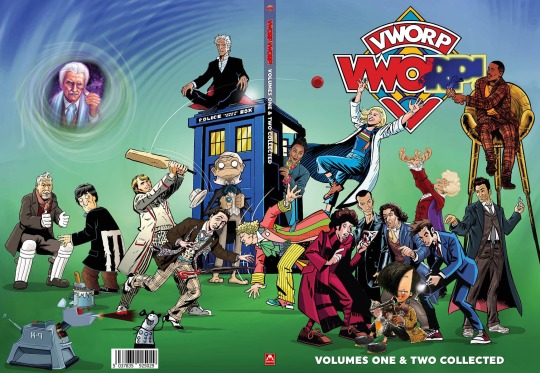
View On WordPress
#Beep the Meep#Brian Bolland#Dave Gibbons#David Lloyd#Dez Skinn#Doctor Who#Doctor Who Magaizne#downthetubes News#Mick McMahon#Ncuti Gatwa#Sheila Cranna#Steve Dillon#Steve Moore#Vworp Vworp!
6 notes
·
View notes
Text



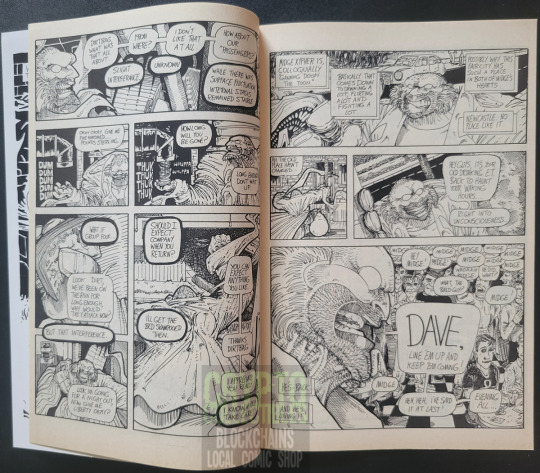
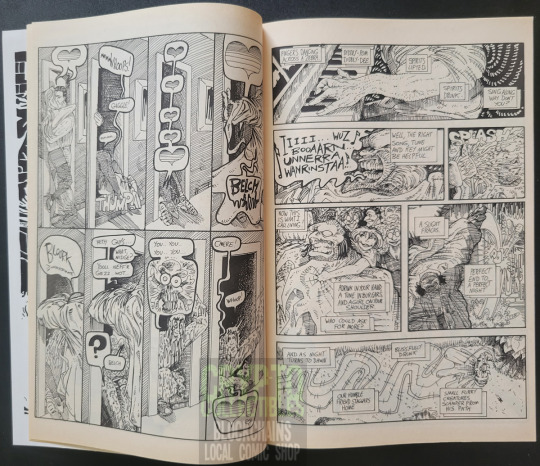


Dirtbag #1 & 3 (1993) by Twist and Shout Comics
By Richard Johnston, cover #1 by Simon Bisley, Brian Bolland, David Lloyd, Dave Sim, cover #3 by Neil Gaiman and Bryan Talbot.
#Dirtbag#Indie Comics#Twist and Shout Comics#1993#Etsy#Vintage Comics#Comic Books#Comics#Richard Johnston#Simon Bisley#Brian Bolland#David Lloyd#Dave Sim#Neil Gaiman#Bryan Talbot
0 notes
Text
i found a book at a flea market with a bunch of comic artist interviews and it has john romita jr, dave mckean, jim lee, steve dillon, brian bolland, my parasocial enemy j scott campbell and more
will report back with my findings 🫡
5 notes
·
View notes
Text

“For someone born & bred in the UK, I haven’t read a huge amount of 2000AD. One of the few stories I have picked up is ‘The Dark Jugdes’ which features a dark alternate dimension called the Deadworld in which twisted versions of the law-enforcing Judges who see all life as a crime. How can you not get drawn into that?!” - Dave
ARTISTS: Frank Cho & Nei Ruffino
LIMITED PRINT: ‘Judge Anderson & the Dark Judges’ for London Super Comic Con (2014)
FEATURING: Judge Fire, Judge Fear, Judge Mortis, Judge Death and Judge Anderson
Judge Death first appeared in 2000AD Prog 148 (1980) with the other three Dark Judges making their debut in 2000AD 224 (1981) and were created by John Wagner John Wagner and Brian Bolland
3 notes
·
View notes
Text
Alan Moore is widely regarded as one of the greatest comic book writers of all time, and his contributions to the medium have been immense. From his groundbreaking work on characters like Swamp Thing, Batman, and Superman, to his groundbreaking graphic novels like Watchmen and V for Vendetta, Moore has had a huge impact on the world of comics. Here are ten of his most acclaimed graphic novels that every comic book fan should check out:
1. Watchmen by Alan Moore and Dave Gibbons: This is arguably Moore's most famous work and is considered a classic in the comic book industry. The story takes place in an alternate history where superheroes exist, and it explores the consequences of their actions and the psychological toll it takes on them.
2. V for Vendetta by Alan Moore and David Lloyd: This graphic novel is set in a dystopian future where a masked vigilante known as V fights against a fascist government. The story is a powerful commentary on fascism, totalitarianism, and the importance of individuality and freedom.
3. The League of Extraordinary Gentlemen by Alan Moore and Kevin O'Neill: This graphic novel is an epic adventure that brings together some of the greatest characters from Victorian-era literature, including Allan Quatermain, Captain Nemo, and the Invisible Man. The story is a thrilling blend of action, mystery, and history.
4. From Hell by Alan Moore and Eddie Campbell: This is a meticulous and haunting investigation of the Jack the Ripper murders, weaving a web of conspiracy and intrigue that stretches from the slums of Whitechapel to the highest levels of power in Victorian England.
5. Swamp Thing by Alan Moore and Steve Bissette: Moore's run on Swamp Thing is considered one of the greatest in the character's history. He transformed the character from a traditional monster comic into a sophisticated meditation on the nature of life, death, and the environment.
6. Promethea by Alan Moore and J.H. Williams III: This is a magical and mystical journey through the Imaginal realms of the mind and the soul, following the adventures of a young woman named Sophie Bangs who becomes the latest incarnation of the mythic warrior Promethea.
7. Batman: The Killing Joke by Alan Moore and Brian Bolland: This graphic novel is a dark and psychological examination of the relationship between Batman and the Joker, exploring the nature of their conflict and the madness that drives the Joker's actions.
8. The Miracles of God by Alan Moore and Mitch Jenkins: This is a series of short stories that explores the supernatural, the miraculous, and the mysterious, touching on themes of faith, wonder, and the unknown.
9. Neonomicon by Alan Moore and Jacen Burrows: This is a horror story that explores the limits of the human mind and the dangers of knowledge and obsession. The story is a continuation of the themes and characters first introduced in Moore's acclaimed series, The League of Extraordinary Gentlemen.
10. The Courtyard by Alan Moore and Jacen Burrows: This is a noir-style horror story that explores the horrors of addiction and the dark places to which it can lead. The story is a vivid and unsettling look at the dark side of human nature.
4 notes
·
View notes